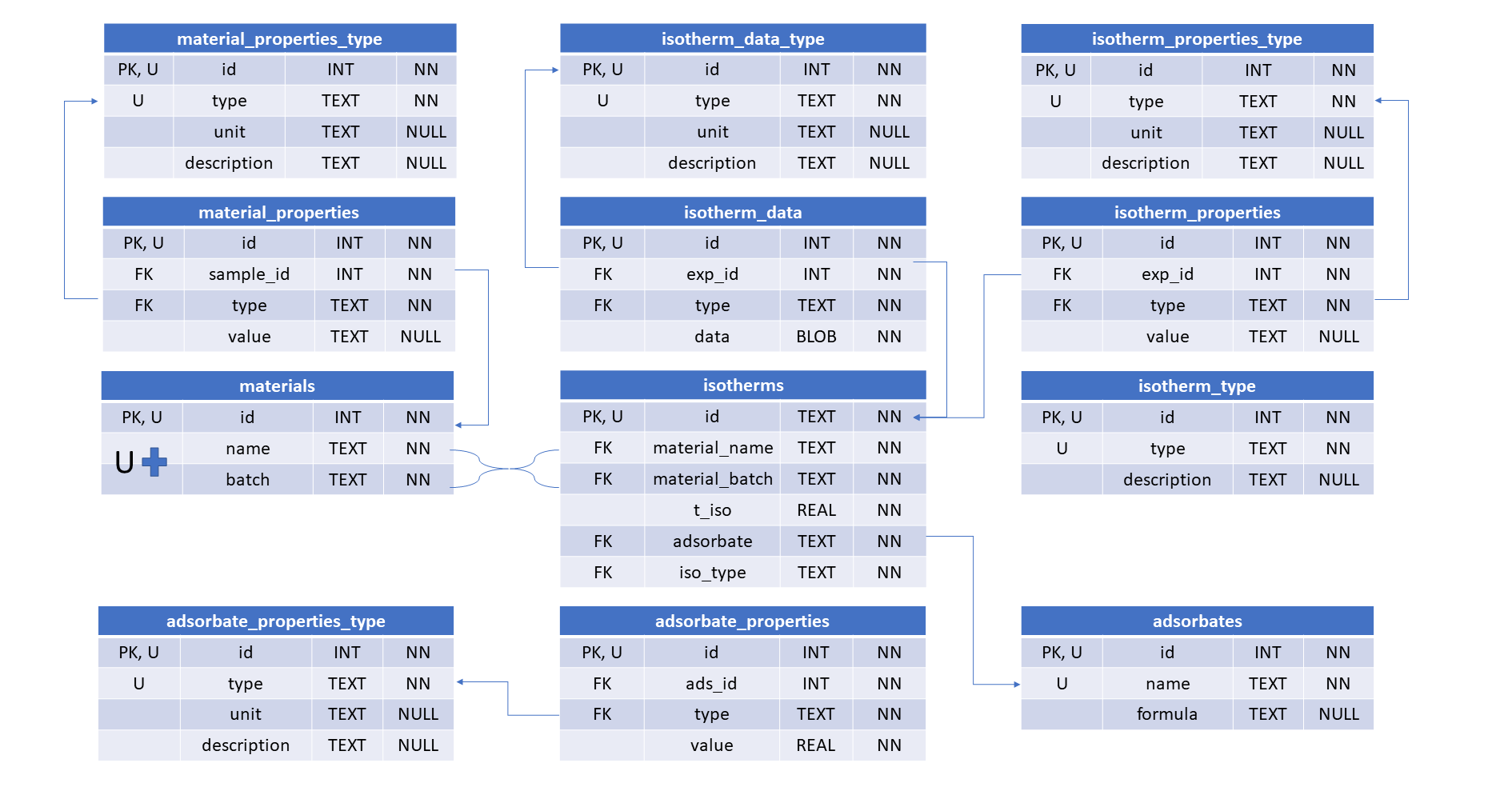Database#
Overview#
The framework provides capabilities to interact with an sqlite database, in
order to store objects such as
PointIsotherm,
ModelIsotherm,
Adsorbate,
Material.
The database was initially envisioned as a centralised data storage for the MADIREL Laboratory in Marseille. To generalize the concept for this framework, the database has been simplified to what the authors consider bare bones, but still extensible, functionality. Suggests for further improvements are welcome.
Note
For most purposes, the internal database is adequate for storage and retrieval. However, it can be difficult to locate it on the disk, and, depending on the amount of data it stores, it can grow to a considerable size. Consider using a separate database file.
Database structure#
A diagram of the database schema can be seen below:

The database is configured to use foreign keys, in order to prevent data redundancy and to enforce error checking. This will make sure that no stored isotherm has an unknown or misspelled adsorbate but it also means that some groundwork is required before uploading the first isotherm.
Database methods#
All the functions which interact with a database take the database path as their
first argument. If the internal database is to be used, the parameter passed
should be the pygaps.DATABASE reference. A complete list of methods can be
found in the sqlite reference.
Database example#
Check out the Jupyter notebook in the examples section
Blank database creation#
The internal database is already created and usable when pyGAPS is installed. If
the user decides to have an external database, they can either copy the internal
database (located in the pygaps/database directory) or generate an empty one
using the db_create command.
from pygaps.utilities.sqlite_db_creator import db_create
db_create("path/to/database")